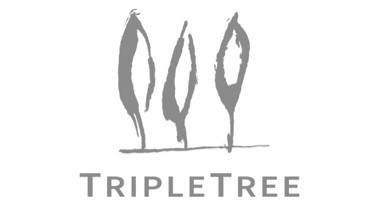PDPM and PDGM changes: find your way through the CMS regulation maze
Review key takeaways of the new payment models from the Centers for Medicare and Medicaid Services

You became a wound care nurse to help and to heal and to make a difference in people’s quality of life. Outsiders call you an angel and are in awe of all you do.
But what you do includes more than patient care.
It also includes managing rigorous regulations and meticulous patient records. Some of that paperwork ensures the right diagnosis and treatment—and some ensures appropriate reimbursement from the Centers for Medicare and Medicaid Services (CMS).
The recent overhaul in CMS reimbursement models marked the biggest changes since the late 1990s.1 While your organization likely planned in advance to implement these adjustments, it’s still early days and a perfect time for a big-picture review.
What’s the big idea?
Previously, long-term care and skilled nursing facilities lived by the Resource Utilization Group (RUG) IV model. The recent change, implemented Oct. 1, 2019, replaced RUG-IV with the new Patient-Driven Payment Model (PDPM), which applies to Part A Medicare residents in post-acute care and utilizes ICD-10 codes to classify patients into certain payment groups. Under the PDPM, there is a large increase in the number of valid Health Insurance Prospective Payment System (HIPPS) rate codes, as compared to RUG-IV.
In parallel, home healthcare services saw a transition on Jan. 1, 2020, from the Home Health Prospective Payment System (HHP PS) to the new case-mix system called the Patient-Driven Groupings Model (PDGM).
The names of the two new models hint at one major underlying similarity—reimbursement is now based on patient characteristics, not on therapy minutes. Therapy is still an important care component, “but CMS determined that the cost of certain services, such as physical therapy and occupational therapy, are not constant across the stay,” explains Jessie McGill, RN, RAC-MTA, RAC-MT, curriculum development specialist, American Association of Post-Acute Care Nursing (AAPACN). A new variable per diem rate (VPD) allows for reimbursement to follow actual need for services.

“So when PT and OT reimbursement starts to decline on day 21, it is not an indication that we need to reduce therapy services; it just allows for one per diem rate to be used across the stay with the expected and projected decline in costs and services related to therapy,” McGill says.
For home health agencies, another major change is that payments are based on 30-day periods instead of 60-day periods. Throughout a resident’s stay at a skilled nursing facility, a provider can also consider an interim payment assessment, or IPA, due to a return from the hospital or change in clinical acuity.
Does the new system seem daunting? Don’t worry about the paperwork headaches, says Jeanine Macguire, vice president of Skin Integrity and Wound Management at Genesis HealthCare. “For the first time, we’re actually going to receive reimbursement for the wound care that we provide every day.”
Key takeaways
Of the 1,300 pages that comprise the revised, long-term care facility Resident Assessment Instrument user’s manual (RAI, v1.17), a whopping 117 cover reimbursement rules.2 It’s no surprise, as reimbursement is so closely tied with assessment. But the changes mean that fewer assessments are required, leading to what CMS touts as a “lower administrative burden” for facilities.3

It also means that nurses and nurse care come to the forefront, while therapy—physical, occupational and speech-language—takes on a lighter reimbursement role. CMS’ intention is to diminish any misguided financial incentives to maximize therapy, sometimes to the point of unnecessary therapy.
“The overall goal of any of the CMS initiatives is to drive providers to deliver the best outcomes at the lowest cost,” says Jennifer Leatherbarrow, RN, BSN, RAC-CT, IPCO, QCP, CIC, manager of Clinical Consulting of Richter LTPAC Performance Advisors.
Not only do therapy and nursing take on more distinct categories now, but a new category has been created for non-therapy ancillary services (NTA), such as medications and supplies. Besides the money aspects, the changes are actually “a natural transition,” says Dr. Rajeev Kumar, MD, CMD, FACP, Chief Medical Officer at Symbria, “because the role of SNFs has evolved over time, from rehabilitation to subacute care for medically complex patients.”
Start with reliable data
To avoid under-reimbursement, assessment and coding accuracy are key, starting with the Minimum Data Set (MDS), which has become more complex under PDPM—161 fields are required, compared to 20 under RUG-IV, Dr. Kumar says. In fact, “The first priority ought to be streamlining MDS reporting, which captures patients’ clinical characteristics and services rendered, so that SNFs can receive commensurate reimbursements.”
“When we look at how PDPM impacts wound care professionals, it is about accurate and timely documentation,” McGill says. She stresses that this etiology of the wound is critical for accuracy. “If a resident has a diabetic foot ulcer, for example, but the wound has not been appropriately assessed and documented to be a diabetic foot ulcer during the lookback period, you may not be able to capture it on the MDS,” she says.
Not only could this lose you the reimbursement but, McGill stresses, “You could have a negative impact on the resident’s outcomes.”
Facing the challenges and opportunities
“If done correctly, [PDPM AND PDGM changes] are an opportunity to increase revenue,” Leatherbarrow says. That opportunity also includes improvement in overall outcomes for patient care, which lead to greater visibility.
“If providers are able to show efficiencies and better outcomes within the new payment model, then other providers in the continuum will want to align themselves with the provider, hospitals will refer to them, insurance carriers will open the network to them and, ultimately, the patients themselves will have a better experience and better health outcomes,” she says.
When it comes to revenue-building, Robin Bleier, president of RB Health Partners Inc., says, “Some facilities might experience an overall increase or decrease in revenue.” Therefore, she notes that it’s that much more important to capture all reimbursable items accurately on the initial assessment.

“While the skilled wound care that was provided was critical to the resident’s plan of care, it may not have been largely monitored or audited for payment purposes,” McGill says of the past. At the same time, she cautions, “Now that wound documentation has the potential to impact reimbursement, expect audits and critiques of your documentation.”
With so many different MDS fields impacting reimbursement, it will fall to nurse assessment coordinators, or MDS nurses, to monitor all clinical documentation, McGill says. Dr. Kumar predicts that the role of an MDS coordinator “will evolve into that of an operational strategist, capable of determining a coding hierarchy for patients with multiple diagnoses to ensure that their case-mix index is accurate.”
Bleier advises organizations to consider outsourcing to clinical and billing consultants to assist with change transition, as well as follow-up audits for accuracy.
For home healthcare, CMS states that the changes also offer the opportunity to report the cost of remote monitoring as allowable costs on the Medicare form. The idea is to promote innovation and modernization in the industry, including better information sharing among patients, caregivers and providers.
The potential upside of all this, observes healthcare merchant bank Triple Tree, is that you may see stronger unity across all disciplines and stronger relationships among home health agencies, hospitals and skilled nursing facilities.
Fears and myths
It’s important to note that therapy services are not going away—and neither should therapists. They will still be very much a part of treatment plans. “While there is an expectation that average therapy minutes per patient stay will reduce, therapy is still a valuable service for our post-acute patients,” Dr. Kumar says.

Although some may assume there will be a shift to focus on caring for medically complex patients, the overall patient base is not changing, Dr. Kumar says.
“We need to work with all patients that come to us with the ‘medical necessity’ mindset,” he says. “Complex patients cost us more to take care of, and we also need to increase the acuity of care we provide by improving the skill set and competencies of our staff.”
Another concern has been on behalf of smaller home healthcare agencies whose referrals are often community-designated.4 There is acknowledgement that they may feel greater financial pressure with PDGM due to patient referral source rules that provide less reimbursement for community referrals. As Triple Tree explains, “The first 30-day episode referral source can be classified as either institutional or community, while all subsequent 30-day episodes in a consecutive stay will be classified as community-referred.”4 Triple Tree also says there may be increased staffing needs to process claims.
- Centers for Medicare and Medicaid Services: www.cms.gov
- Find updated news and information about
- American Health Care Association: www.ahcancal.org
- Read about and participate in weekly surveys that help AHCA address and advocate for your needs.
- Alliance of Wound Care Stakeholders: www.woundcarestakeholders.org
- Focuses on coding, coverage and reimbursement; quality measures and wound care research.
- Medicare Payment Advisory Commission: www.medpac.gov
- Provides Congress with analysis and policy advice on the Medicare program.
Be part of the success group
Time will tell how well the changes have been implemented across the medical community. Leatherbarrow says, “We recently heard Clifton Porter, [head of government affairs] of AHCA, speak, and he indicated that the expectation is the 20/60/20 rule: 20 percent will do well, 60 percent will muddle along, and 20 percent will fail.” She says it will likely be the organizations that invested in staff education and process improvement that fall into the first group, but adds, “Unfortunately, there are many providers that did not invest enough.”
In many ways, the CMS shift to patient-driven reimbursement presents opportunities for wound care nurses to shine, McGill says. Regardless of the initial stress and adjustments, the changes highlight the crucial role of wound care in the overall health of each patient. Learn more about how to make the right skin health choices for your patients.
Related articles:
Pressure injury guidelines: a look back and review of what’s new
References:
- https://skillednursingnews.com/2019/03/pdpm-101-what-skilled-nursing-providers-need-to-know-now/ (Accessed February 14, 2020)
- https://www.mcknights.com/print-news/its-showtime-providers-supporting-cast-members-hustle-to-handle-changes-under-pdpm/ (Accessed February 14, 2020)
- https://www.cms.gov/newsroom/press-releases/cms-drives-patient-centered-care-over-paperwork-proposals-modernize-medicareand-reduce-burden (Accessed February 14, 2020)
- https://www.triple-tree.com/strategic-insights/2019/february/post-acute-payment-reform-pdgm%E2%80%99s-far-reaching-imp/?utm_source=Email&utm_medium=Blog&utm_campaign=Post-Acute-Payment-Reform (Accessed February 14, 2020)
